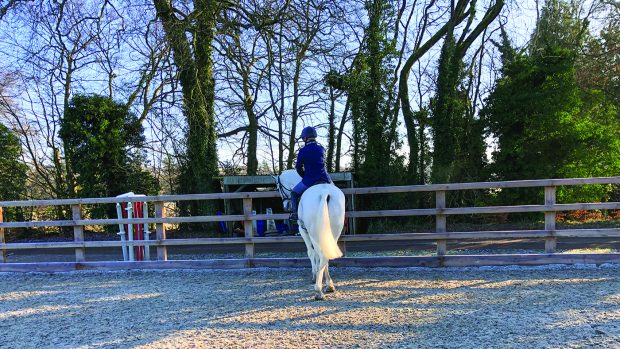Four-star event rider Coral Keen provides one H&H forum user with some helpful advice on how to make transitions more expressive
Q: Expression through transitions: “I’m after some ideas for exercises to help with getting more expression through transitions. I event my horse at BE100 and we score pretty consistently in the mid to low 20s in the dressage, but I was finding that I wasn’t getting many comments on my sheet. I did a clinic on Monday where I rode my test. I got my sheet back (21.25) and could speak to the judge after. She said to improve he now needs more expression through his transitions particularly up into canter. Are there any exercises that I can add into my schooling sessions that would help with this? I know my scores are good but I like to continue to improve.”
A: “This is an interesting question and credit must go to you for the fantastic dressage scores you are reaching already. I really like that you have highlighted the detail you can go into in a test. I think sometimes us eventers can ride a bit safe in our tests as there are always two more phases to go. However, as we all know, fortune favours the brave and bold test riding with thought to presentation is often exceptionally well rewarded.
We should also all take note, that even when you are scoring a highly competitive mark, we should not rest on our laurels. You illustrate that there is always opportunity to gain a better score in dressage, we should analyse all performances and be on the lookout for areas where we can push those mark even higher.
Continued below…
Related articles:
When looking at the scales of training, expression fundamentally comes from engagement and push from the hind quarters, but it will only show through if there is a supple back and free shoulders.
For suppleness I would use lateral work as it is a really good way of improving this area and helping a horse to stretch.
Riding a correct shoulder in on three tracks will increase engagement, collection and suppleness. It creates more bend in the inside hind leg encouraging the hind quarters to take more weight then if you were on a straight line. It really helps a horse to stretch and control its inside hind leg, as well as freeing the shoulder. You can also use the reverse of shoulder in – travers (haunches in). This will focus on asking the horse to use its outside hind leg. This movement tends to be taught after the shoulder-in and if you find your horse is struggling slightly, ask for less of an angle and try the movement in canter.
Then when riding a transition, again you can use shoulder in or shoulder fore on a 20m circle. This will encourage the horse to have their hind leg underneath them even more and should create a lighter more through transition.
Another exercise to try at home, especially when focusing on the upwards canter transition, is to ride the first stride in medium. This should focus the horse to really think about stepping through and forward into that transition and being reactive off your leg in the first stride. Then I would bring it back a little more when working towards a test, but hopefully by injecting that energy in training, it will show through with a more expressive transition during the test.
For all the latest news analysis, competition reports, interviews, features and much more, don’t miss Horse & Hound magazine, on sale every Thursday



